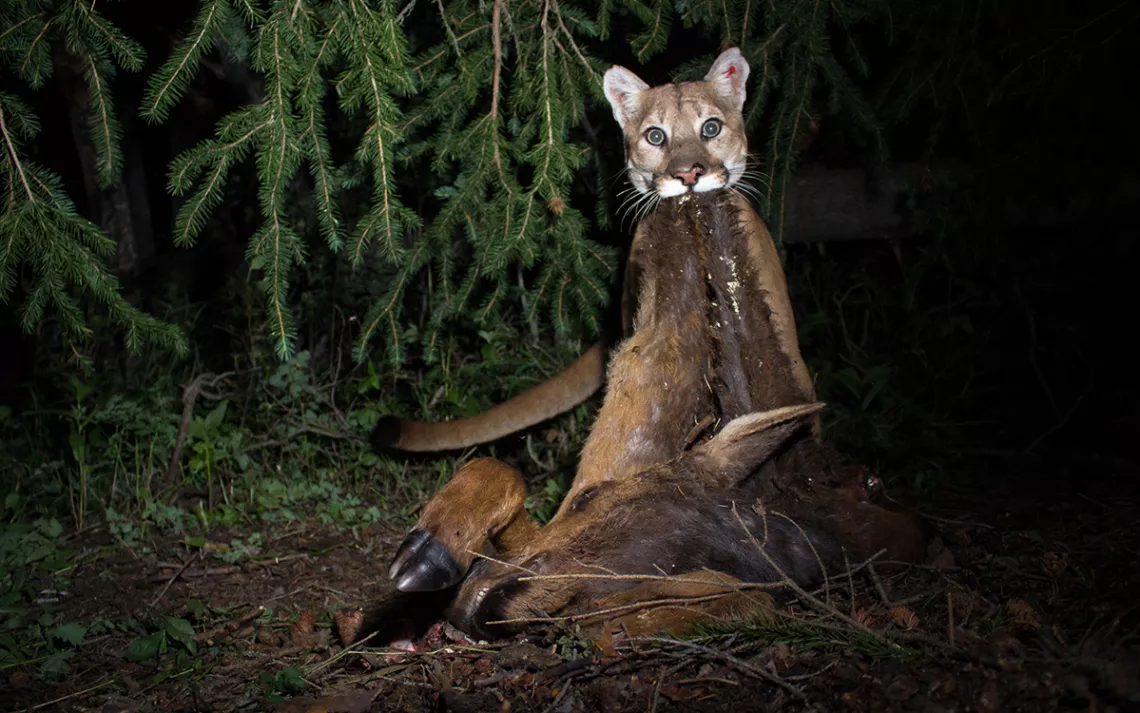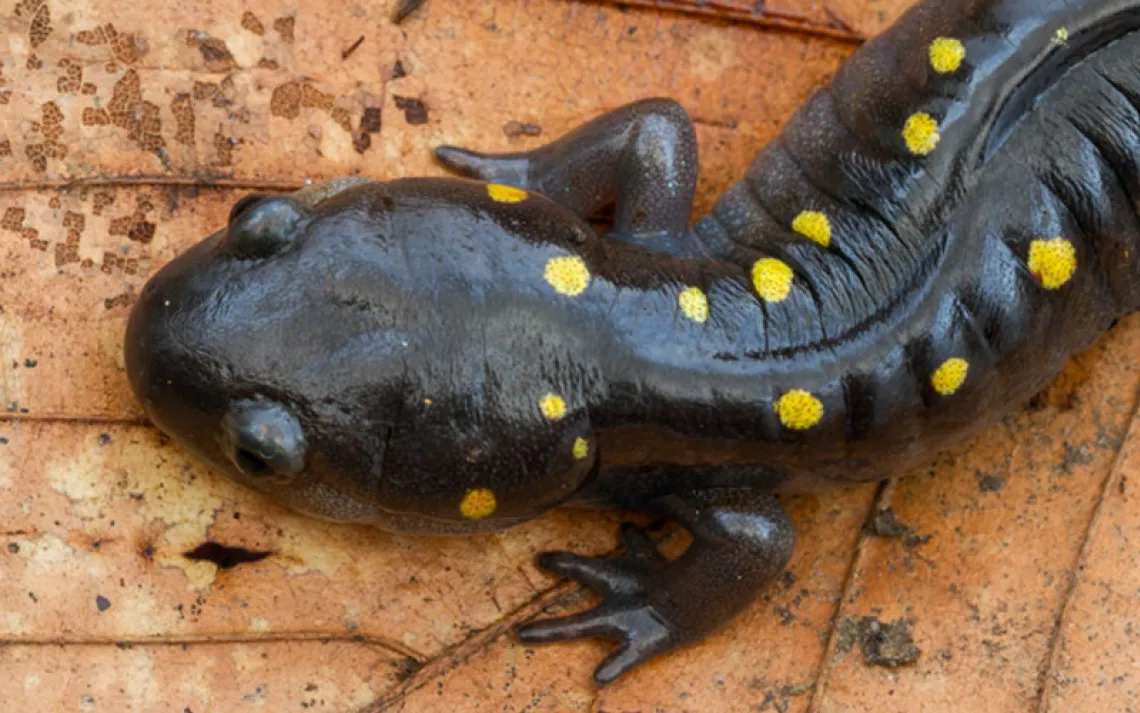Mountain Lions Are Murder Gardeners
By leaving carcasses, mountain lions create lush landscapes for future victims that could attract prey

Puma in Wyoming. | Photo by Neal Wight, courtesy of Panthera
If you’re hiking in Yellowstone and stumble upon an unusually lush landscape, you might have found a mountain lion’s garden. Mountain lions alter specific areas within their range by leaving the carcasses of their prey there to decay and fertilize the surrounding foliage, like an exceptionally violent compost pile. “If it were your neighbor, you’d say they were gardening,” said Mark Elbroch, Puma Program director at Panthera, a global wild cat conservation organization, and an author of a new paper about these big cat gardens, published recently in Landscape Ecology.
Elbroch and the team documented this “gardening” behavior by tracking 50 mountain lions within the Greater Yellowstone Ecosystem for almost four years and mapping where they left their prey (a total of 172 carcasses) along the way. They collected soil and plants from beneath those carcasses every three to six months, and tested them for nitrogen and other indicators of energy content for a total of three years.
The tests found that nitrogen—a key nutrient for plant growth—increased in the soil following the deposition of a carcass. The plants showed a similar trend too: The nitrogen content in the plants growing at the kill sites was, on average, 30% higher than in plants growing elsewhere. “The plants are sucking up a lot of this carcass deposition, which is pretty amazing,” said Elbroch. Since previous research has shown that plants with higher nitrogen content are generally more attractive to prey species like deer and elk, it’s likely that the carcass deposition is luring in prey.
“In this area where they’re putting carcasses, the grass is richer, the shrubs are richer. So deer and elk come in to feed again, and boom! They get killed there, which feeds the grass and the plants again, and then that attracts another deer to come in, and it dies in the exact same place,” said Elbroch.
Linking mountain lion behavior to soil composition and plant quality is a unique contribution to how scientists understand mountain lion ecology, said Max Allen, a carnivore ecologist at the University of Illinois who was not involved in the research. While the behavior might seem like a brilliant hunting strategy, it’s probably not intentional, said Allen. Instead, it’s a side effect of how mountain lions tend to hunt anyway: They kill over and over again in a few spots where contours in the landscape or other features provide cover for the mountain lions to stalk and kill their prey—usually deer, elk, and sheep. Those “localized hotspots,” as the study describes them, become nutrient-rich, biodiverse pockets on the landscape.

Scientist Jeremy Williams, working with Panthera’s Teton Cougar Project, collects soil samples at puma kill sites. | Photo by Michelle Peziol, courtesy of Panthera
“The architecture of the terrain creates places where mountain lions have an advantage and places where they don’t,” said Elbroch. “Where mountain lions have an advantage, where there’s a fold in the land or a roll in the landscape that hides them just the right way, they’re going to start depositing carcasses there.”
Next, Elbroch wants to determine whether ungulate prey species are actually preferentially choosing to forage in these hotspots, by tracking deer and elk as they search for food. The team didn’t follow the behavior of deer and elk, so they can’t say for sure whether they’re traveling to those places specifically to access higher-quality plants. But, said Elbroch, “everything sets the stage for that to be a real possibility.” Allen is interested in how the new findings fit into contributions other predators, such as wolves, make to the nutrient cycle. Wolves could also be enriching their favorite hunting and eating spots, but being pack animals, they tend to leave less flesh for scavengers than mountain lions do.
The research adds to evidence that mountain lions are ecosystem engineers with a large effect on other organisms in their environment. The “gardening” behavior contributes to the way that energy cycles and distributes throughout the environment, improving the ecosystem’s overall health, Elbroch said. “The more pathways that energy has to move, the more resilient a system is,” he said. “It can more quickly bounce back after some sort of disturbance, whether that’s a disease, a fire, a logging operation—whatever kind of disturbance occurs.” By killing prey and leaving excess that allows mice, birds, insects, and other scavengers to eat their fill too, mountain lions also create habitat for other creatures.
For Elbroch, the findings underscore the need to conserve mountain lions. “These are a species that are absolutely contributing to biodiversity and supporting healthy ecosystems, which we as humans depend on for our own health,” he said. “I think it's very fair to say that lions are supporting healthy human communities.”
 The Magazine of The Sierra Club
The Magazine of The Sierra Club



